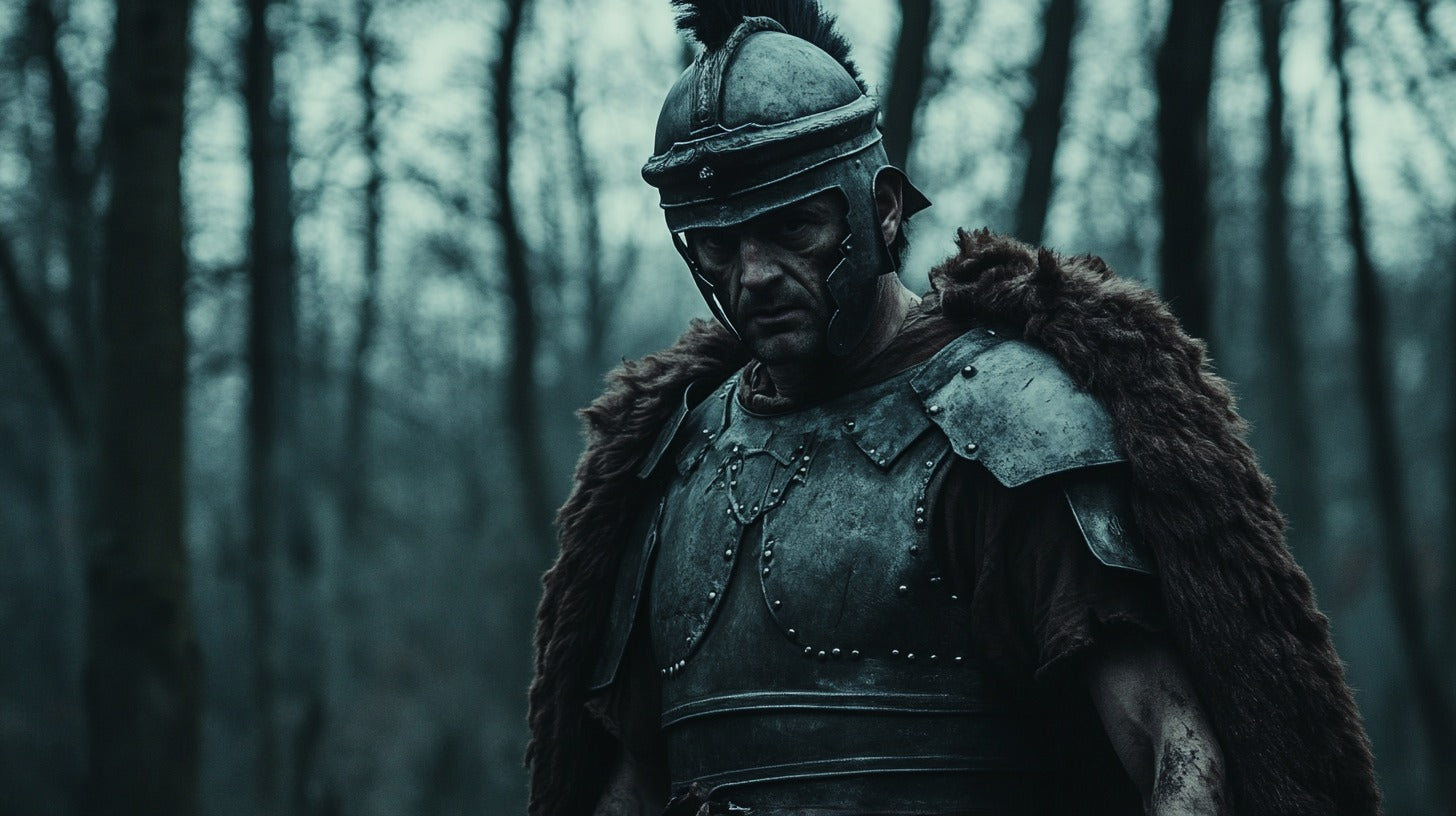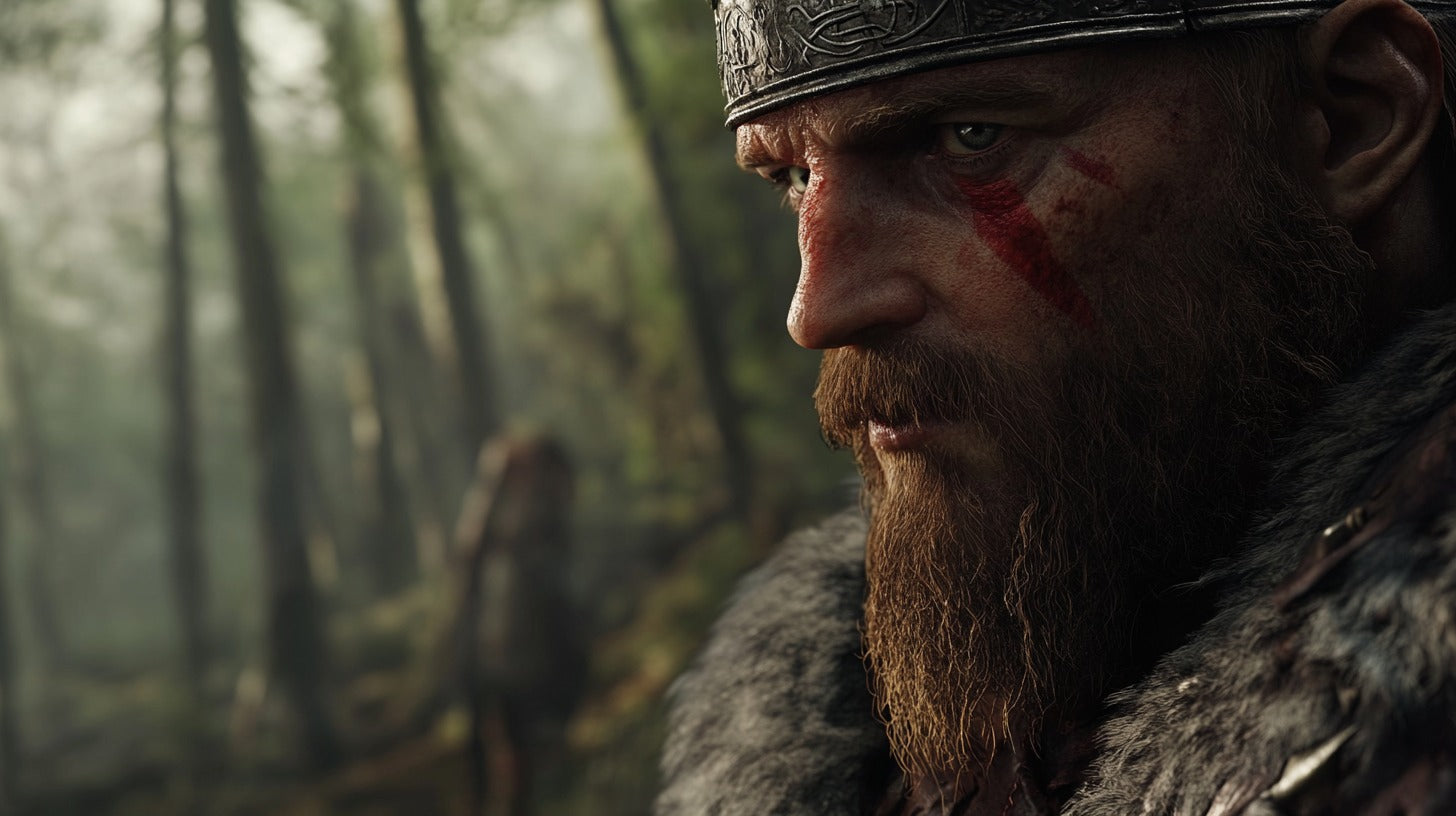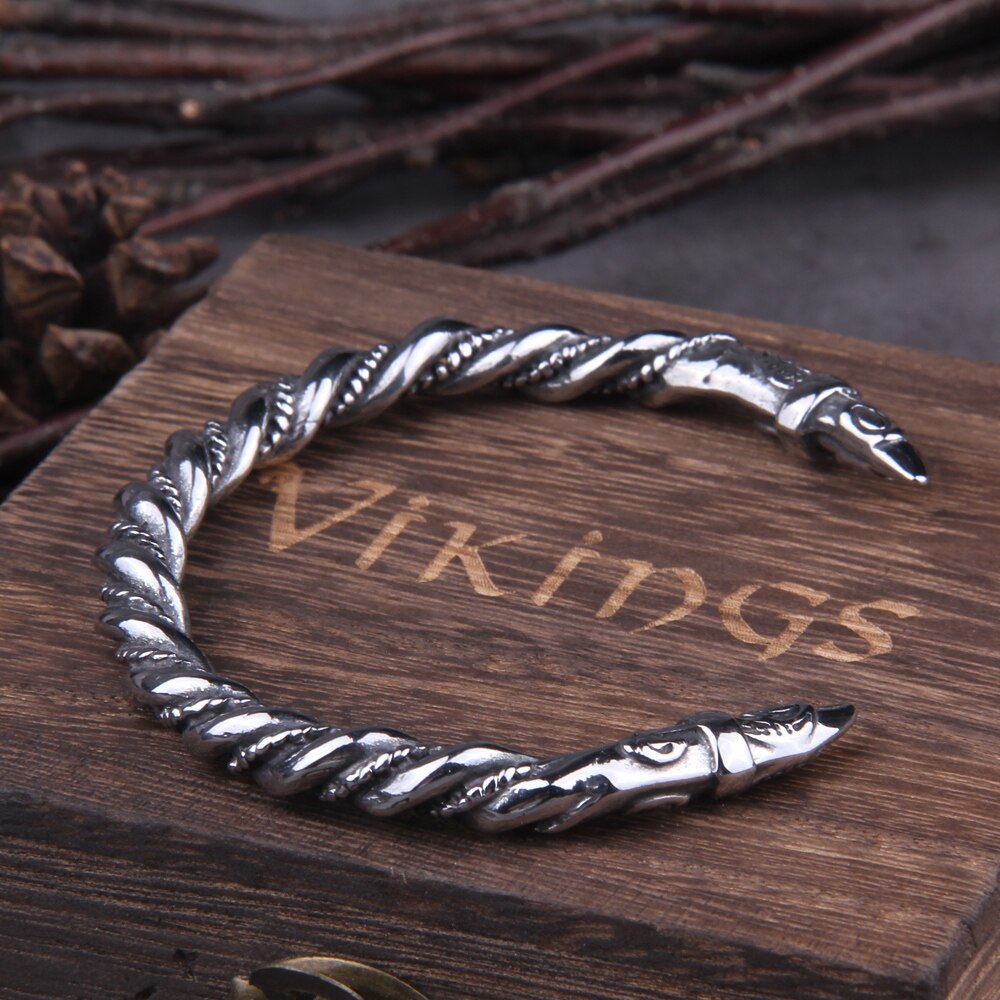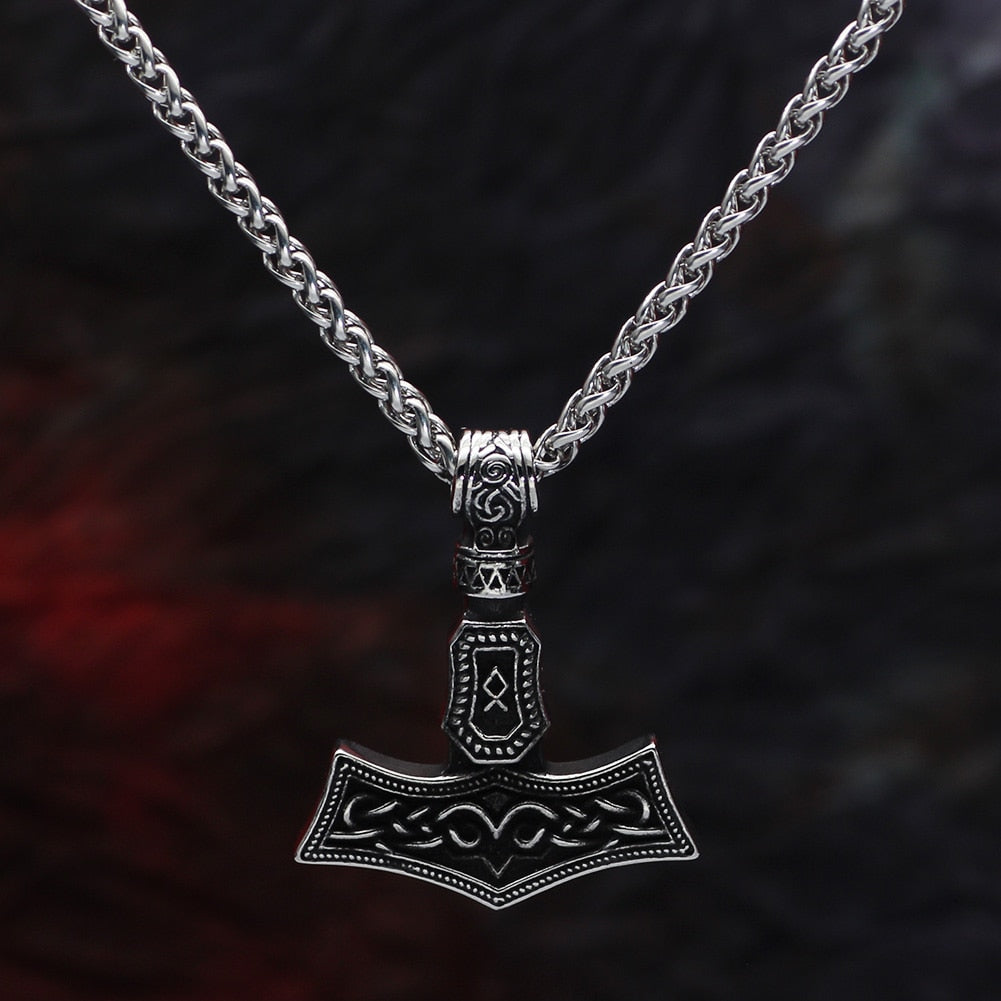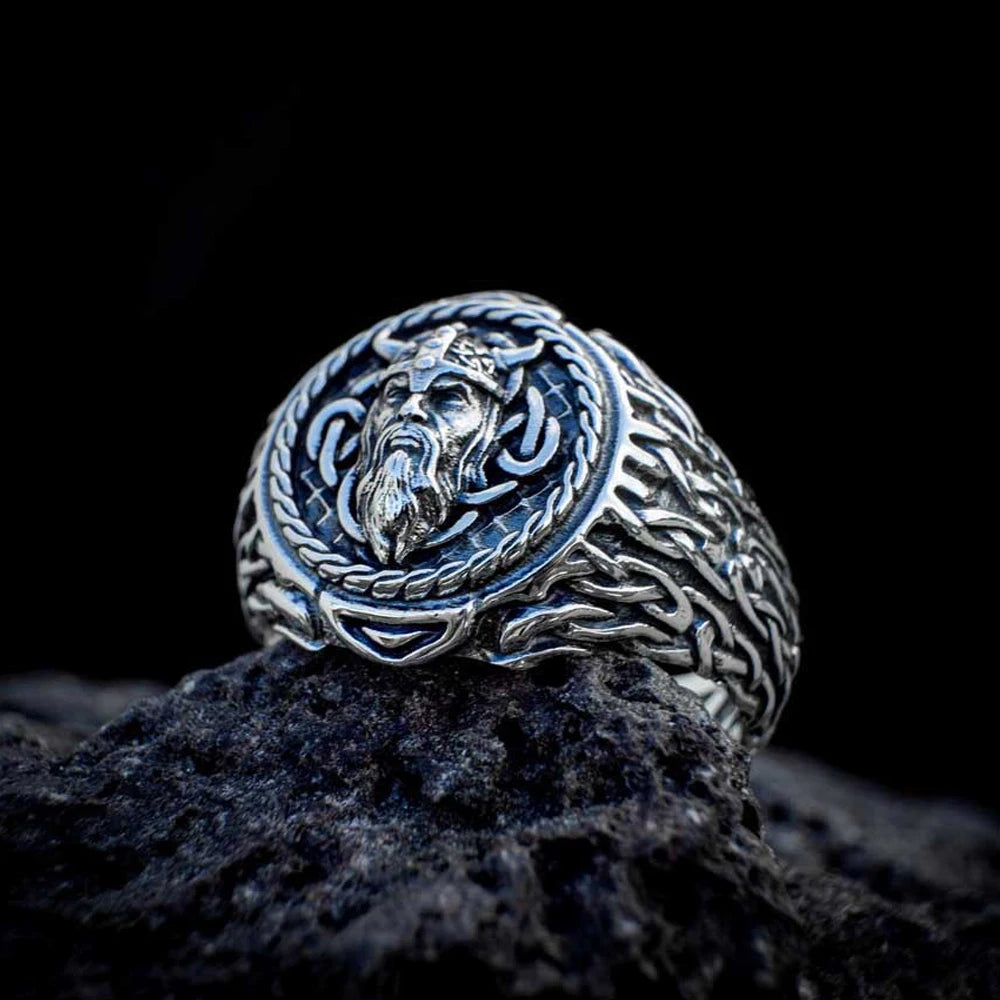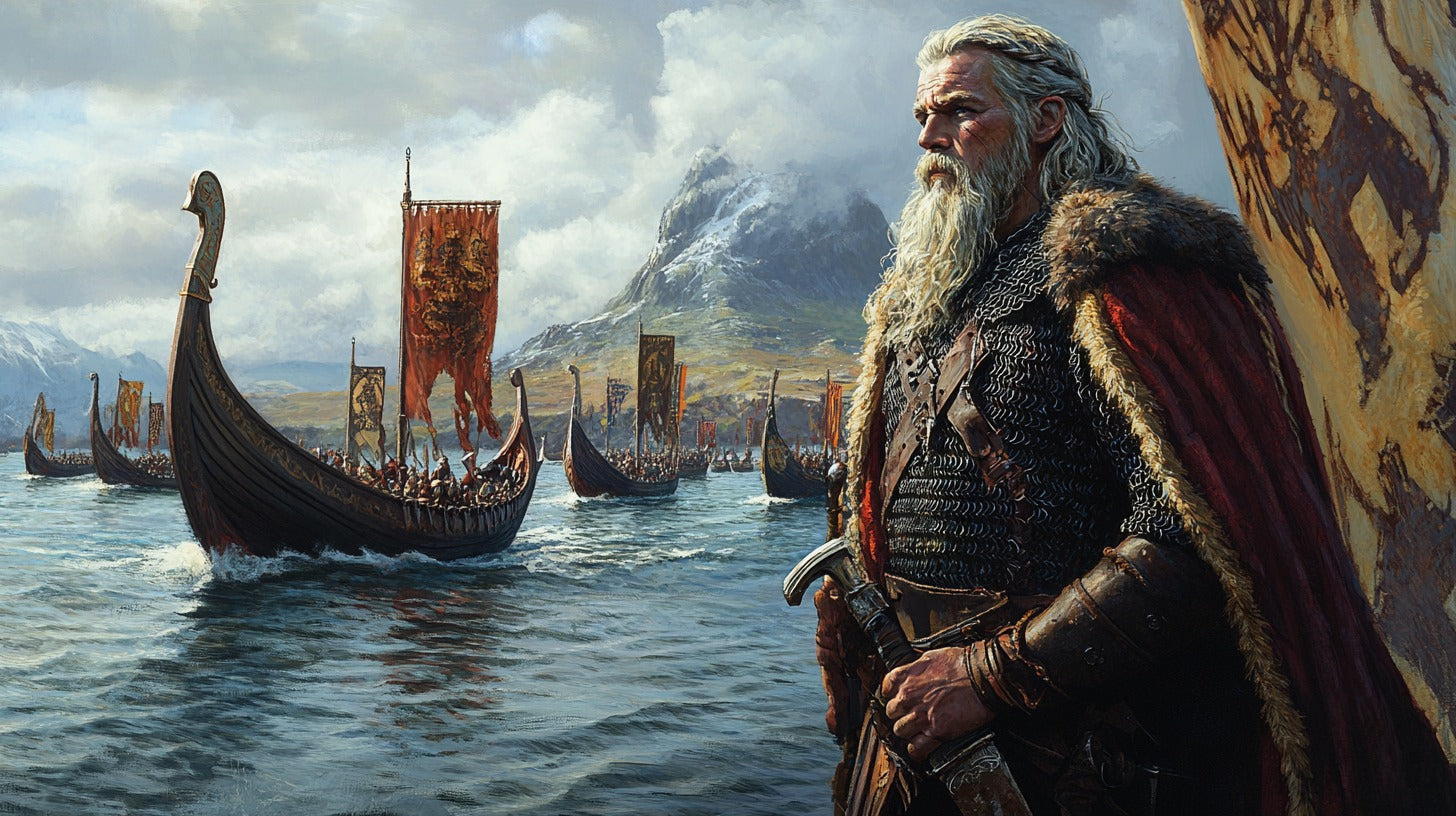
Magnus Barefoot: The Last Viking King of Norway
Magnus III Olafsson, commonly known as Magnus Barefoot (Magnús berfœttr), reigned as the king of Norway from 1093 to 1103. Known for his bold military campaigns and attempts to revive the Viking spirit, Magnus embodied the adventurous and fearless qualities of the Norse warrior tradition. His reign was marked by territorial expansion, political ambition, and a controversial legacy that has fascinated historians for centuries. Despite his untimely death, Magnus Barefoot remains a pivotal figure in the closing chapter of the Viking Age.
Early Life and Ascension to the Throne

Norwegian silver penning from Magnus Barefoot's reign (1093–1103 AD). Obverse: bust facing left with unreadable inscription; reverse: double cross with central circle, surrounded by a solid ring and unreadable text. (Photo: Museum of Cultural History, University of Oslo, Norway CC BY-SA 4.0)
Magnus was born around 1073 as the son of Olaf III Haraldsson (Óláfr kyrri) and Tora Arnesdatter, and grandson to Harald Hardrada. Unlike his father, who was known for his peaceful governance, Magnus embraced the martial traditions of his Viking ancestors. His epithet, “Barefoot,” is said to have originated from his adoption of Gaelic-style clothing, which included going bare-legged, during his expeditions in the British Isles.
After the death of his father in 1093, Magnus ascended to the throne. Initially, he shared power with his cousin Haakon Magnusson, but Haakon’s death the following year left Magnus as the sole ruler of Norway. From the outset, his reign was defined by ambition and a return to the expansionist policies of earlier Norwegian kings.
Military Campaigns and Territorial Expansion

Thor’s Hammer Mjölnir Amulet with Othala Rune
Scotland and the Hebrides
One of Magnus Barefoot’s most significant campaigns was his expedition to the British Isles. In 1098, he sailed to Scotland, asserting dominance over the Hebrides, the Isle of Man, and parts of the western Scottish coast. His conquests solidified Norwegian influence in these regions, and Magnus even entered a treaty with King Edgar of Scotland, ensuring Norway's control over its newly acquired territories.
Magnus’s ventures in the British Isles were not only military but also cultural. His campaigns brought him into contact with Gaelic traditions, which influenced both his appearance and his leadership style.
Ireland and the Battle of Ulster
Magnus’s ambition also led him to Ireland, where he sought to strengthen Norwegian influence over Dublin and the surrounding Norse-Gaelic settlements. In 1103, Magnus launched a campaign to secure these territories. However, his plans ended abruptly when he was ambushed and killed at the Battle of Ulster. His death marked the end of Norway’s significant involvement in the British Isles and the decline of Viking expansionism.
Governance and Domestic Policy
While Magnus is best known for his military exploits, his domestic policies also played a role in shaping Norway. He sought to strengthen royal authority and centralized control, building on the foundations laid by his predecessors. Magnus’s reign saw continued support for the Christian Church, though his focus on foreign campaigns often overshadowed his contributions to Norway’s internal development.
Legacy of Magnus Barefoot

Magnus Barefoot's army in Ireland, as imagined in Gustav Storm's 1899 edition of Heimskringla
The Last Viking King
Magnus is often regarded as the last Viking king of Norway due to his emphasis on raiding and expansion, which harkened back to the Viking Age. His death in Ireland marked a symbolic end to this era, as subsequent Norwegian rulers adopted a more settled and Europeanized approach to governance.
Controversial Reputation
Historians view Magnus’s reign as a mixture of ambition and recklessness. While his campaigns demonstrated extraordinary courage and military skill, they also strained Norway’s resources and diverted attention from internal development. His epithet “Barefoot” reflects both his individuality and his willingness to embrace foreign customs, making him a complex and multifaceted figure.
Magnus Barefoot’s life and reign encapsulate the spirit of a changing era. As a warrior-king, he sought to revive Norway’s Viking legacy, leaving a mark on the history of the British Isles and Scandinavia. However, his untimely death in 1103 underscored the challenges of sustaining an expansionist policy in an evolving medieval world. Magnus remains a compelling figure, embodying the tension between tradition and transformation at the close of the Viking Age.
Frequently Asked Questions (FAQs)
- Why was Magnus called “Barefoot”?
His epithet comes from his adoption of Gaelic-style clothing, including going bare-legged, during his campaigns in the British Isles.
- What territories did Magnus Barefoot conquer?
Magnus secured control over the Hebrides, Isle of Man, and parts of western Scotland, and also campaigned in Ireland.
- How did Magnus Barefoot die?
Magnus was ambushed and killed at the Battle of Ulster in 1103 during a campaign in Ireland.
- Why is Magnus considered the last Viking king?
His emphasis on raiding and territorial expansion marked the final chapter of the Viking Age in Norwegian history.
- What was Magnus Barefoot’s relationship with Christianity?
Magnus continued to support the Christian Church, though his focus on military campaigns often overshadowed religious reforms.
References
Bagge, Sverre. From Viking Stronghold to Christian Kingdom: State Formation in Norway, c. 900–1350.
Forte, Angelo, et al. Viking Empires. Cambridge University Press, 2005.
Crawford, Barbara E. Scandinavian Scotland. Leicester University Press, 1987.
Downham, Clare. Viking Kings of Britain and Ireland: The Dynasty of Ívarr to A.D. 1014. Edinburgh University Press, 2007.
Sturluson, Snorri. Heimskringla: History of the Kings of Norway.
